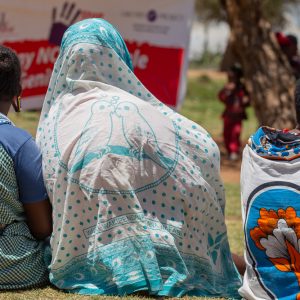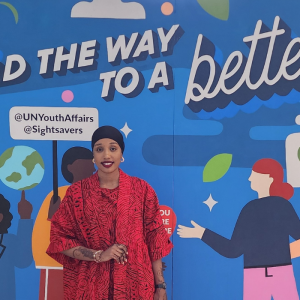Earlier this month, Orchid Project attended a conference held by WADI and Hivos on female genital cutting in the Middle East and Asia.
FGC is still an underreported issue in the Middle East and Asia. Whilst Iraqi Kudistan was recently included in UNICEF figures, such nationwide data for other countries does not yet exist. The result is that these countries regularly get missed out of the conversation and there is little understanding of the practice.
However, this is beginning to change, as evidenced by the coming together of passionate delegates from Indonesia, Iraq, Iran, India, Egypt, Oman, Malaysia and Saudi Arabia. To be surrounded by key activists working on an issue that is so taboo was inspiring. Orchid Project learned so much from these activists and we are currently updating our country pages and resources.
Main points
Habiba Al Hinai discussed FGC in Oman and her study which shows that 78% of women had been cut in a sample carried out in the North of Oman, inclusive of educated, university students. Work to expose the practice in Oman is difficult due to a law prohibiting individuals from carrying out research without the consent of the government.
Susan, a blogger from the South of Oman said that prevalence is understood to be extremely high but there is a lack of data on FGC. Whilst the Ministry of Health five-year plan 2006-2010 intended to start raising awareness on FGM, nothing has yet been done.
Rayehe, a researcher from Iran shared her study and others which show prevalence ranging from 56% to 83% in different study areas. There has been a reduction in the practice, possibly from the influence of media and television.
Dr Mawaheb El-Mouelhy shared research that showed a large drop in prevalence amongst a sample of schoolgirls in Egypt of whom 50% had been cut (compared to overall country prevalence at 91%). She shared the history of work against FGC in Egypt – the first religious (Muslim) scholar spoke out against the practice in 1904!
Azrul Mohd Khalib, a human rights activist from Malaysia stated that here FGC is medicalised, performed by the educated middle class and perceived to be a religious obligation. The practice has only been around for the past 100 years or so. The results of a study by Dr Maznah Dhalui (2010) found that 93.5% of Muslim women surveyed had undergone FGC with methods including removing 1.5cm of the clitoris. The government have called for guidelines to standardise the procedure – a serious issue in Indonesia as we have reported in many blogs. Activists in Malaysia are forming a lobby group to work to end the practice.
In Indonesia, FGC is perceived to be required by Islam, a means of supressing sexual activity and seen as a matter of perpetuating local and cultural practices. If estimates that 85-100% of girls and women have undergone FGC are correct, up to 100 million girls and women are at high risk of or already have been cut.
WADI plan to put together a film on FGC in the Middle East and Asia and held a citizen journalism workshop for all the activists present. A camera then went back to each country for individuals to document their work.
Religion
How religion is linked with FGC was a common discussion running throughout the conference. Whilst not required by any major religious text, religion is often cited as a factor involved in the decision taken to perform FGC.
Abdul Rouzi, a gynaecologist from Saudi Arabia, stated the harmful nature of Type I and shared the upsetting cases he has come across where individuals had suffered cysts and other impacts or believed they had undergone the least invasive form of FGC but in reality had been sewn closed. He stated that to cut without harming is impossible, and therefore not Islamic.
Syarifatul Adiba, Senior Programme officer for Sisters in Islam, noted the close ties between religion and FGC in Malaysia where the National Fatwa Council stated in 2009 that female circumcision is obligatory. Sisters in Islam refute such religious arguments using religious texts and the fact that there is no mention of female circumcision in the Qur’an.
Orchid Project’s partners similarly involve religious leaders in their work in order to discuss the links between FGC and religion. For example, Tostan involves religious leaders such as Demba Diawara, a Senegalese village chief and imam, who regularly speaks to the fact that “the tradition” is not mandated by Islam, as reported last year in The Guardian.
What is needed?
Data on the practice is needed within the Middle East and Asia. Research will enable the full extent of the practice to be realised as well as local reasons for practicing to be understood and incorporated into grassroots efforts to end the practice.
Context specific interventions and civil society action need to be developed and understood that take local factors into account. Supportive religious leaders need to be engaged within this since the practice is so closely tied to the belief that it is required by religion. Health practitioners also need to be involved, especially where the practice is medicalised as is the case in SE Asia and increasingly in the Middle East.
Regional strategies were called for, as well as advocacy coalitions involving partnerships between researches, activists and other stakeholders. This conference marked the beginning of such partnerships across the Middle East and Asia.
As a first step towards this, activists formed two networks, one for the Middle East, and a second for South East Asia. A South East Asia Joint Statement was released which we will publish this week.
With such keen activists raising the profile of the issue within their communities (and hints from UNICEF that some countries mentioned have asked for assistance on collecting data on FGC), we can hope that FGC in the Middle East and Asia will receive more attention internationally and on the ground efforts can be supported and accelerated.






